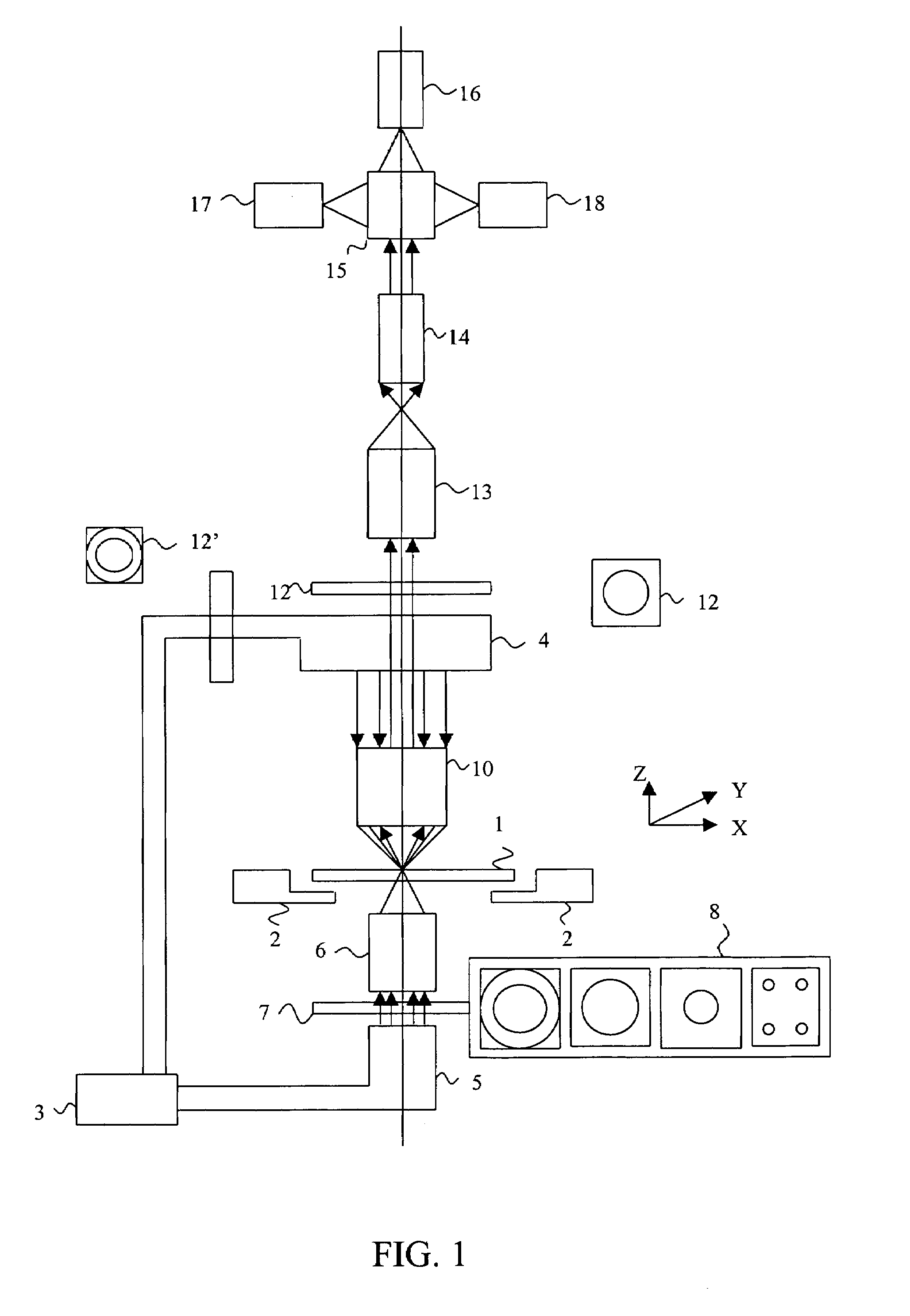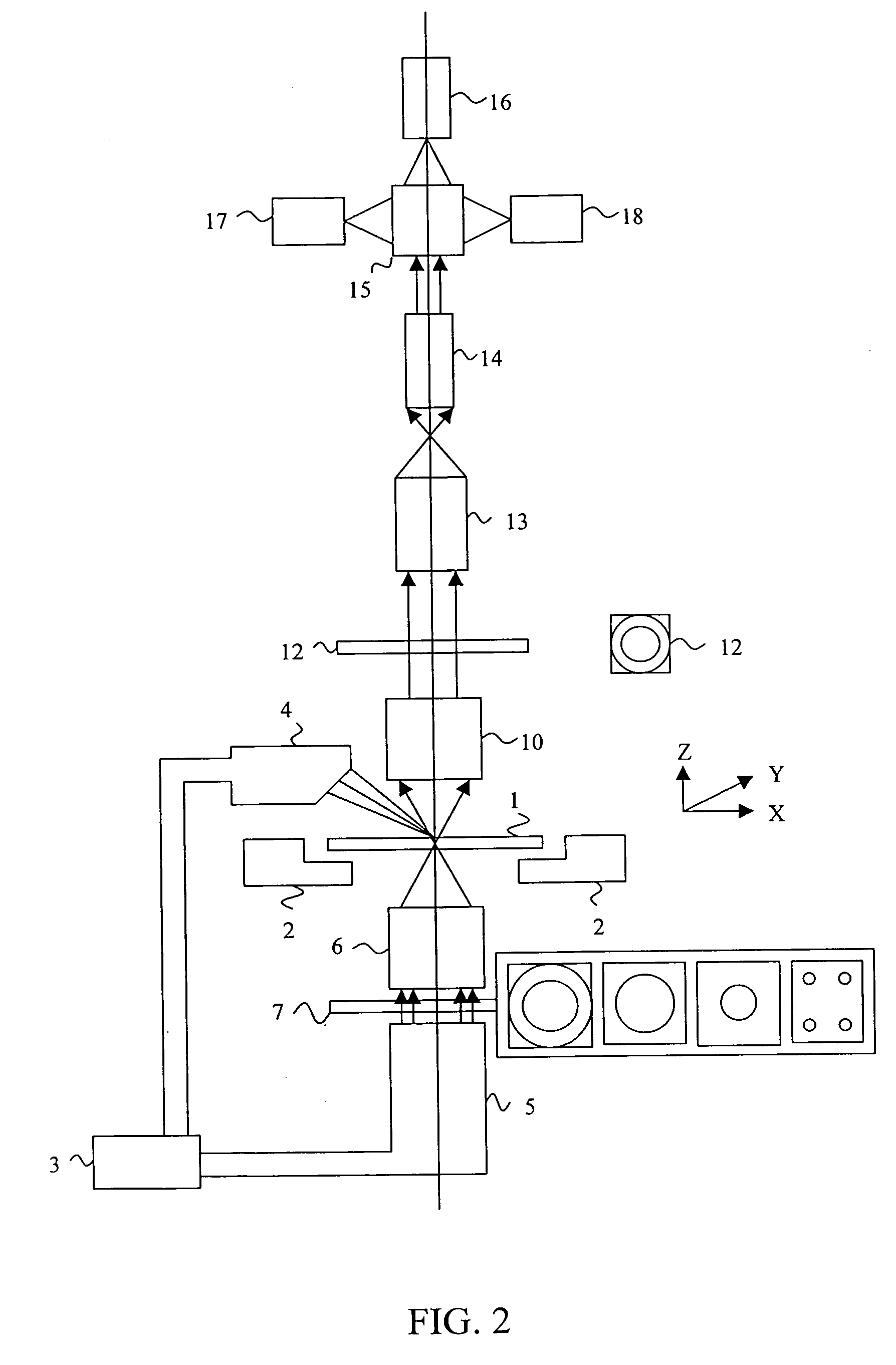Method and apparatus for reticle inspection using aerial imaging
- Summary
- Abstract
- Description
- Claims
- Application Information
AI Technical Summary
Benefits of technology
Problems solved by technology
Method used
Image
Examples
Embodiment Construction
[0034]Embodiments of the invention will now be described, by way of example only, with reference to the attached drawings.
[0035]The system for defect detection according to the present invention is composed of three main modules: (1) a scanner module; (2) a defect detection image processing hardware module; and (3) a post process and review station. The scanner module scans the reticle and acquires aerial images of the reticle in transmitted light at a plurality of focal planes, preferably three, and dark field images of the reticle in reflected light at one focal plane. By properly adjusting the apertures of the illuminating and imaging parts of the optical system, the NA and the coherence factor are adjusted. The optical system of the scanner module simulates the behavior of an optical exposure system and, as a result, the acquired transmission light aerial images are optically equivalent to those produced on the photoresist under a given set of exposure conditions. The image proc...
PUM
 Login to View More
Login to View More Abstract
Description
Claims
Application Information
 Login to View More
Login to View More - R&D
- Intellectual Property
- Life Sciences
- Materials
- Tech Scout
- Unparalleled Data Quality
- Higher Quality Content
- 60% Fewer Hallucinations
Browse by: Latest US Patents, China's latest patents, Technical Efficacy Thesaurus, Application Domain, Technology Topic, Popular Technical Reports.
© 2025 PatSnap. All rights reserved.Legal|Privacy policy|Modern Slavery Act Transparency Statement|Sitemap|About US| Contact US: help@patsnap.com



